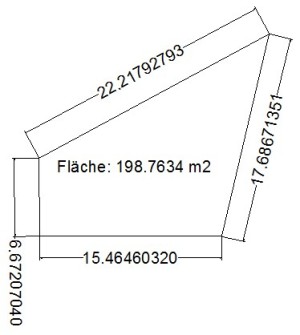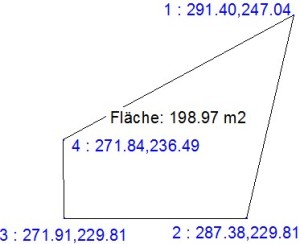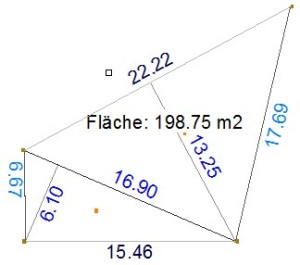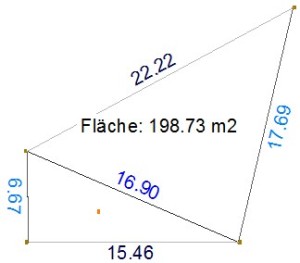Table of Contents
Tips and Tricks
The DATAflor Hotline questions are often asked about how certain tasks in the area of documentation are to be solved. The answers to these frequently asked questions are documented in this chapter.
Deviations in the CAD quantity calculation
Question: A deviation is specified for the automatically generated documentation of the area. What causes this deviation?
Answer: In DATAflor Different quantities of CAD are used: CAD quantity, documented quantity and quantity in the quantity statement, which then also work with different numbers of decimal places.
- CAD amount: Exact amount of the object calculated by AutoCAD with approx. 300 decimal places.
- Documented amount: Indicates the documented number of child objects of the position. This value is determined using the REB 23.003 calculation formulas. All values used for the calculation are rounded to 2 (distances, areas) or 3 (volume) decimal places. Depending on the documentation method, the shortening of the decimal places can result in deviations between the documented quantity and the CAD quantity.
- Quantity in the quantity statement: Returns the documented amount in the DATAflor BUSINESS Proof of quantity. The value can be added up through the coupling of several drawings as well as through manual entries in the quantity statement.
An example can be used to understand the problem of rounding:
You can see that four different calculation methods can also produce four different results.
The more complicated the structure of the object to be documented, the greater the deviations can be, since considerably more partial areas are used and calculated, each of which is rounded or calculates with rounded values.
If objects are documented for which there are no REB 23.003 formulas (e.g. splines), deviations can arise because the object is broken down into REB 23.003 compliant objects (lines and arcs) and these objects cannot correspond 100% to the original object.
When documenting sheets, there may be deviations due to REB 23.003 Formula 9. Arcs are calculated according to this formula using their chord length and the height of the chord to the arch. Since this is an approximation formula, there are deviations. In addition, the deviation also depends on the size of the arch.
Edit documentation
Question: The automatically generated documentation looks confusing. What options are there to adapt the documentation?
Answer: There are several options available to you for editing the documentation. These are listed below and explained in more detail in the corresponding chapters:
- Documentation options > Simplify documentation
- Documentation options > Increase your score
- surfaces > Automatic documentation
- Instructions for use > Edit documentation in the drawing
Line type not displayed correctly
Question: In the documentation, the line type dashed line was selected for the height of the triangles. The line is then not displayed in the documentation. The same goes for the dot and dash line. How do the lines become visible? Why is that?
Answer: You can use the same linetype at different scales by changing the linetype factor either globally or individually for each object. By default, the scale for the line type is set to 1.0. The smaller the scale, the more pattern repetitions are generated per drawing unit. For example, a factor of 0.5 shows two repetitions of the pattern in the line type definition for each drawing unit.
Short line segments that cannot display a full line type pattern are displayed as a solid line. For lines that are too short to represent a single stroke sequence, you can use a smaller line type factor. To do this, select the documentation object and open the properties. Now change the value for in the properties Linetype factor.





